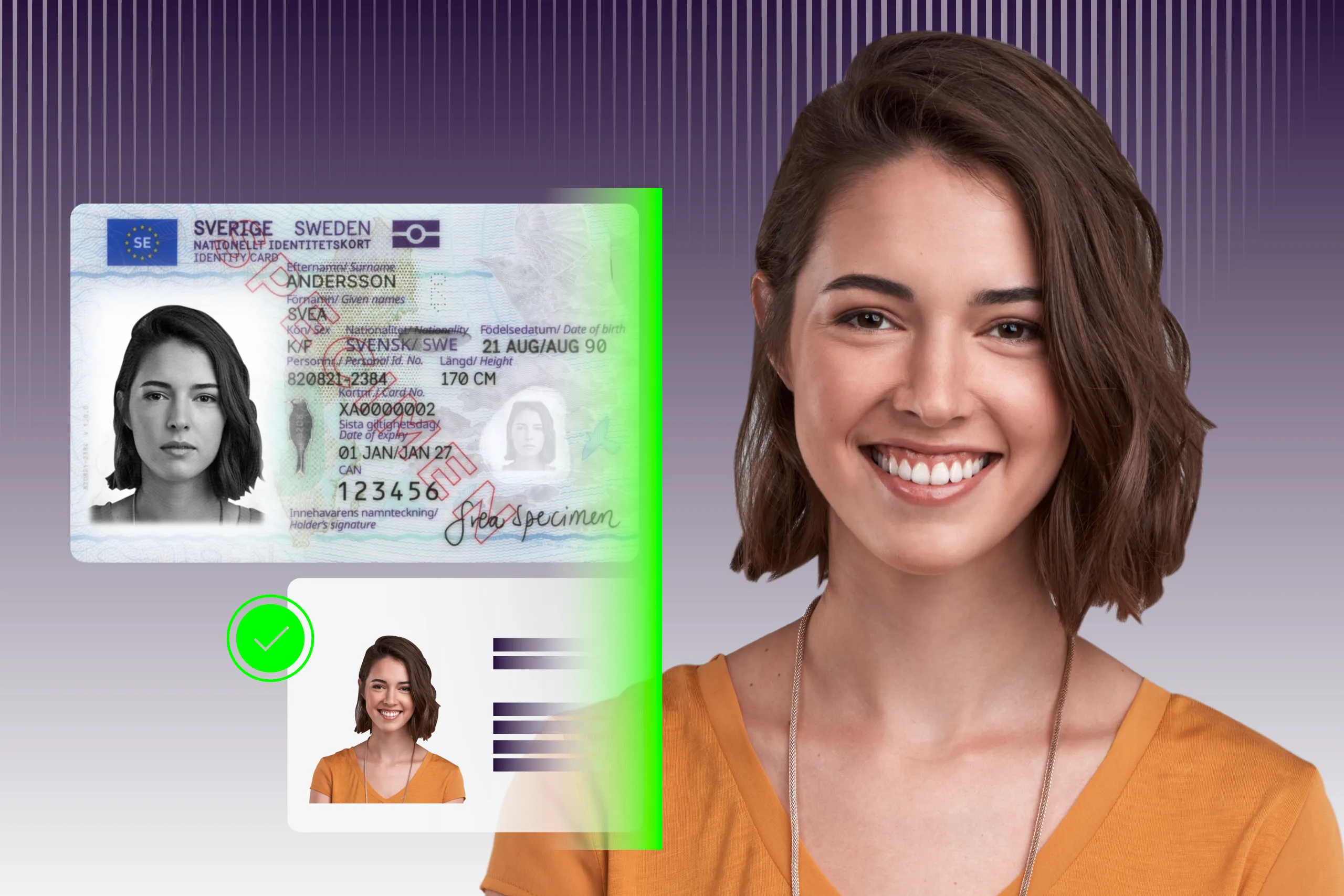Have you ever given up on a service because the text on a button was too small or a signup form didn’t fit your mobile screen?
People with special needs among your potential or regular customers likely face even more issues from these design oversights.
The World Health Organization reports that 1.3 billion people—or about 16% of the global population—live with some form of disability. Besides those with disabilities, other customers such as seniors also struggle with poorly designed interfaces.
This makes creating accessible digital services, including identity verification (IDV), both a legal and ethical responsibility for companies.
In this article, we discuss what accessibility in IDV entails and share six ways to make this process inclusive for all customer groups.
Subscribe to receive a bi-weekly blog digest from Regula
What makes the IDV process accessible?
Policies exist to regulate web and mobile accessibility in general, and they also apply to IDV processes, which typically involve filling out registration forms, scanning ID documents, and taking selfies.
The user interface (UI) and user experience (UX) are crucial in making this flow smooth for customers. In Regula’s survey, 28% of digital nomads—who often complete a variety of IDV procedures—reported frustration with a poorly designed UI.
The following methods can help improve your current IDV setup by enhancing both UI and UX:
1. Automate but communicate
Today’s technology allows companies to automate nearly every step in IDV, from ID scan quality assessment to liveness detection. This creates a seamless UX, requiring minimal manual input.
Maximize IDV automation benefits: How does data entry automation drive revenue?
Modern IDV solutions can recognize document types, whether they be passports, residence permits, or visas. Optical character recognition (OCR) enables quick data capture and accurate parsing into relevant fields, while NFC verification for biometric documents adds speed and security. Facial recognition technology then matches the user's selfie with their ID photo, and integration with databases provides rapid information validation.
Throughout the process, real-time feedback and clear prompts are essential to prevent and correct errors, making the flow less intimidating—especially for users less familiar with tech.

Using prompts and progress bars in UI simplifies the IDV process for customers.
2. Mix text and visuals in guidelines
To streamline onboarding, many companies provide new users with brief, in-product guides that outline each step for identity verification.
There is a roughly even split between users who prefer text instructions and those who favor images. For this reason, it’s best to incorporate both text and visual elements in your onboarding tours. Using an AI photo editor can help you quickly create high-quality visuals that enhance user understanding and engagement during the onboarding process.
Using larger font sizes for titles and main ideas, alongside smaller descriptive text, allows you to communicate key points clearly while also offering detailed guidance for each step.

Images in onboarding guidelines can reinforce text instructions. For instance, a passport image can indicate that only this type of ID is acceptable for identity confirmation.
3. Prioritize minimalism in UI
IDV procedures demand focused attention from users, which can feel overwhelming, especially for first-timers who may worry about making mistakes they can’t easily undo.
To reduce this anxiety, it’s essential to keep the app interface clean and straightforward. Excessive elements, lengthy instructions, and small icons or text can easily distract users.

Keep users focused on what they need to do now, avoiding unnecessary explanations about upcoming steps.
4. Use status indicators beyond colors
Many web and mobile interfaces rely on color to signal user action—for example, red for alerts, exceptions, and errors, and green for success or normal status.
However, color perception varies. What’s more, red-green color blindness is the most common type, making it difficult for affected users to distinguish these colors. It’s essential, then, to avoid relying solely on color for important cues.
Adding geometric shapes or other visual indicators alongside colors can effectively communicate status information to all users. A status system that combines color, shape, and symbols not only aids those with disabilities but also improves UX overall. Offering a black-and-white UI option is another example of an accessible UI.

Green icons indicating successful IDV can’t be obvious for all users. Color-independent indicators, like tick marks to represent "yes," make the UI more accessible without compromising UX.
5. Engage multiple senses
The visual aspect of a UI is often prioritized in digital services, but companies can enhance user experience by engaging other senses as well.
To confirm user actions, tactile feedback like vibrations or auditory signals, such as jingles, can reassure and guide users through the IDV process.
Many devices now support haptic technology, which gives a physical sensation (like a push or vibration) when something on the screen is touched. IDV developers can leverage this by creating distinct haptic feedback for different actions, where, for example, a long buzz might signal a call, and a short one a new message.
6. Allow interface customization by users
Ultimately, users know their needs best, so IDV solutions must be compatible with current device and in-app settings, including accessibility features like screen readers. This adaptability lets users personalize the interface, whether by enabling dark mode or increasing font size—small adjustments that can significantly improve UI accessibility.

Accessible IDV solutions adjust to the user’s device settings, such as font size and display mode, creating a better UX.
What else is critical for accessible IDV?
IDV solutions have become an integral part of a wide range of scenarios, from mobile banking to flight check-in and e-marketplaces. In terms of accessibility, this means companies should align the UI with the specific requirements of their business.
For instance, adding localization options, such as supporting multiple languages, makes the verification process easier for users worldwide. IDV vendors should also allow flexibility in modifying graphics, text, and branding elements within the camera view interface used for IDV. This approach maintains brand consistency and enhances user familiarity.
Inclusive, user-friendly IDV systems improve accessibility and overall UX. Сompanies that learned this lesson well choose a customized identity verification UI. In fact, one in three companies surveyed by Regula emphasized a user-friendly interface with clear instructions.
Regula SDKs support both customization and automation to ensure a smooth user experience for every customer.





